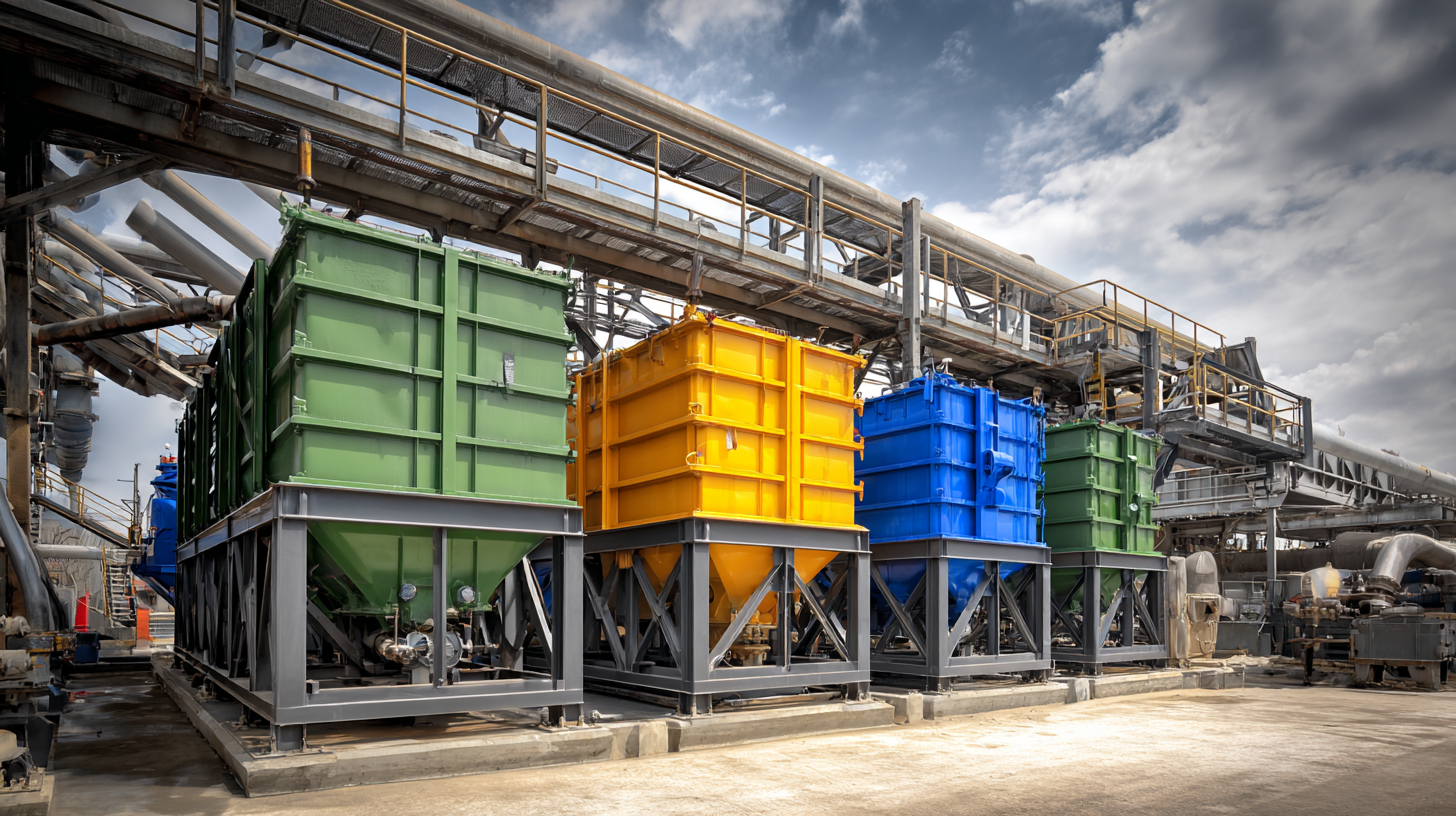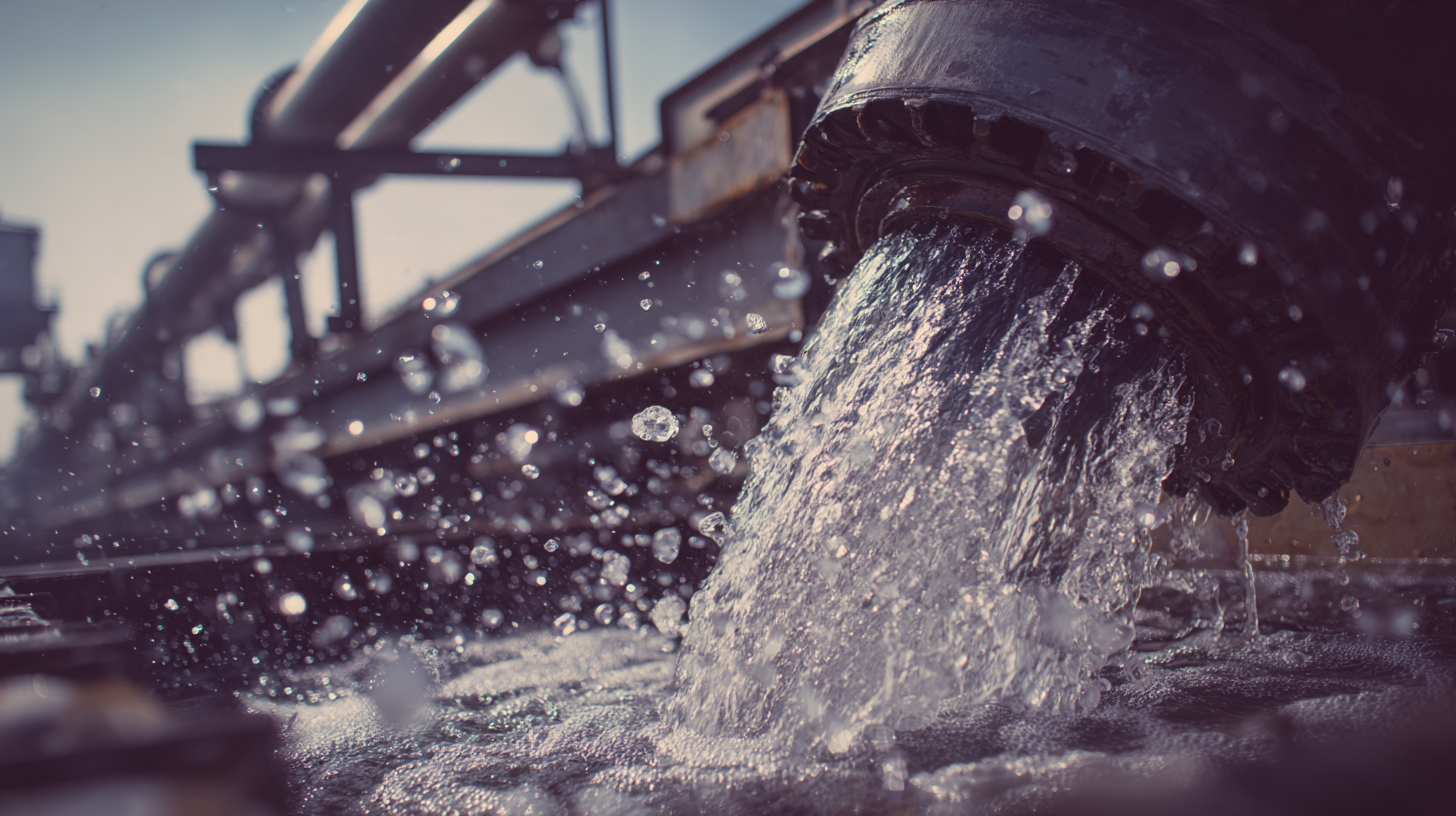 +86 13600513715
+86 13600513715



In the realm of wastewater treatment, Mechanical Sludge Dewatering plays a crucial role in managing and reducing the volume of sludge, thereby enhancing the efficiency of treatment processes. However, the journey toward optimal dewatering is often riddled with challenges that can impede performance and increase operational costs. From the technical intricacies of dewatering systems to the unpredictable nature of sludge characteristics, professionals in the field must navigate a landscape filled with potential pitfalls. By unpacking common operational issues experienced during Mechanical Sludge Dewatering, this blog aims to shed light on the complexities of the process, offering insights into troubleshooting and best practices. As we explore these challenges, we will also consider the future of dewatering technologies and approaches, paving the way for improved sustainability and efficiency in wastewater management.

Mechanical sludge dewatering is a crucial process in wastewater treatment, yet it is fraught with operational challenges that can hinder efficiency and increase costs. One common issue is the variability in sludge characteristics, influenced by factors such as the source of wastewater and treatment methods. According to a report by the Water Environment Federation, fluctuations in total solids concentration can result in inconsistent dewatering performance, complicating operations. Inadequate pre-treatment processes can exacerbate these challenges, leading to higher polymer usage and operational costs.
To tackle these issues, it is essential to conduct regular audits of sludge composition and adjust dewatering parameters accordingly. Implementing real-time monitoring can also provide operators with immediate feedback on performance, enabling quicker adjustments and optimized resource use.
Tip: Consider investing in advanced dewatering technologies, such as centrifuges, which have been shown to provide higher solids recovery rates and improved energy efficiency compared to traditional methods.
Another challenge arises from the maintenance of dewatering equipment. Wear and tear, inefficient cleaning protocols, and unforeseen breakdowns can result in downtime, affecting overall treatment capacity. Industry studies indicate that poor maintenance can lead to a 20% increase in operational costs.
Tip: Schedule regular maintenance and training sessions for operational staff to ensure they are equipped to quickly identify and address potential issues, thus minimizing downtime and maintenance costs.
| Challenge | Description | Impact | Potential Solutions |
|---|---|---|---|
| High Polymer Consumption | Excessive use of polymers for coagulation can lead to increased operational costs. | Higher operational costs and increased chemical handling issues. | Optimize dosage and switch to alternative coagulants. |
| Inconsistent Feed Flow | Fluctuations in the flow of sludge feed can disrupt dewatering processes. | Increased downtime and reduced dewatering efficiency. | Implement flow balancing systems and predictive flow monitoring. |
| Mechanical Failures | Breakdowns of mechanical components can halt operations. | Increased maintenance costs and operational delays. | Establish routine maintenance schedules and use predictive maintenance tools. |
| Poor Sludge Quality | Variability in sludge composition affects dewatering performance. | Reduced cake quality and inconsistent output. | Conduct regular quality assessments and adjust processes accordingly. |
| Environmental Compliance | Meeting regulatory requirements can complicate operational protocols. | Potential legal issues and fines for non-compliance. | Stay updated on regulations and incorporate compliant technologies. |
Dewatering mechanical sludge is a critical aspect of wastewater treatment processes, but its efficiency is significantly influenced by the characteristics of the sludge being processed. Sludge properties such as composition, particle size, and the presence of organic matter can dramatically affect dewatering performance. For instance, finer particles often lead to increased water retention, making the dewatering process more challenging and less efficient. Additionally, high levels of organic material can introduce variability in sludge behavior, further complicating the operation.
Another important factor to consider is the age of the sludge. Freshly generated sludge typically has a higher water content and lower settling characteristics compared to aged sludge. This means that operators must tailor their dewatering strategies based on the specific sludge characteristics at hand to achieve optimal results. Understanding these variables allows for better predictions of dewatering performance and aids in selecting the appropriate mechanical equipment, whether it be centrifuges, belt presses, or filter presses, ensuring that the dewatering process is both economical and effective.
Mechanical sludge dewatering is crucial for wastewater treatment facilities, yet it faces numerous technical challenges that can hinder operational efficiency. Equipment failures often pose significant problems, with studies indicating that about 30% of downtime in treatment plants is attributed to mechanical issues. Common failures include pump breakdowns, filter cloth obstructions, and associated electrical faults. Regular monitoring and predictive maintenance can drastically reduce these failures; a report by the Water Environment Federation emphasizes that proper maintenance practices can mitigate up to 50% of potential equipment downtime.
In addition to equipment failures, suboptimal maintenance practices can exacerbate operational challenges. According to a 2022 report by the International Water Association, facilities that implement comprehensive maintenance schedules see an average of 20-30% improvement in dewatering performance. Failure to adhere to such practices can lead to increased energy consumption and reduced cake quality, directly impacting disposal costs. By embracing advanced maintenance technologies, such as condition-based monitoring, facilities can ensure smoother operations and extend the lifespan of their equipment, ultimately optimizing the dewatering process and minimizing operational disruptions.
The U.S. sludge dewatering equipment market is on an upward trajectory, projected to grow from USD 609.0 million in 2024 to an impressive USD 992.6 million by 2033. This remarkable growth highlights the increasing necessity for efficient sludge management solutions amid rising environmental regulations. Process optimization, particularly in the context of balancing cost and performance, becomes critical as industries strive to maintain compliance while also managing operational expenses.
Recent research reveals innovative approaches to optimize dewatering processes. For instance, a study on industrial textile landfill sludge demonstrated cost-effective re-dewatering techniques using ferrous sulfate and blast furnace slag, optimizing the process at a significant scale. Furthermore, the integration of advanced methodologies, such as response surface methodology, facilitates the identification of optimal solutions that bolster both environmental and economic performance, ensuring that sludge management systems not only function efficiently but also align with sustainability goals. Enhanced techniques, like machine learning in sludge treatment and the application of microbial fuel cells, are paving the way for improved dewaterability and reduced energy consumption, reflecting the industry's commitment to continuous improvement and innovation in sludge dewatering processes.

In the realm of wastewater treatment, effective mechanical sludge dewatering is essential yet often fraught with operational challenges. According to the Water Environment Federation, inefficient dewatering can lead to increased operational costs, contributing up to 60% of total sludge management expenses. Regular monitoring and adept troubleshooting of dewatering systems can substantially mitigate these costs and enhance overall performance.
Implementing best practices in monitoring is crucial for identifying issues early. Utilizing real-time sensors and data analytics can aid operators in tracking critical parameters such as moisture content and the performance of dewatering equipment. A study published in the Journal of Environmental Engineering highlights that facilities using advanced monitoring technologies reported a 25% increase in the efficiency of their dewatering processes. Additionally, routine maintenance checks and a structured troubleshooting protocol can prevent common problems such as filter cloth blinding and pump failures, which are prevalent in over 40% of dewatering operations. By adopting these strategies, facilities not only optimize their dewatering systems but also ensure compliance with environmental regulations.

